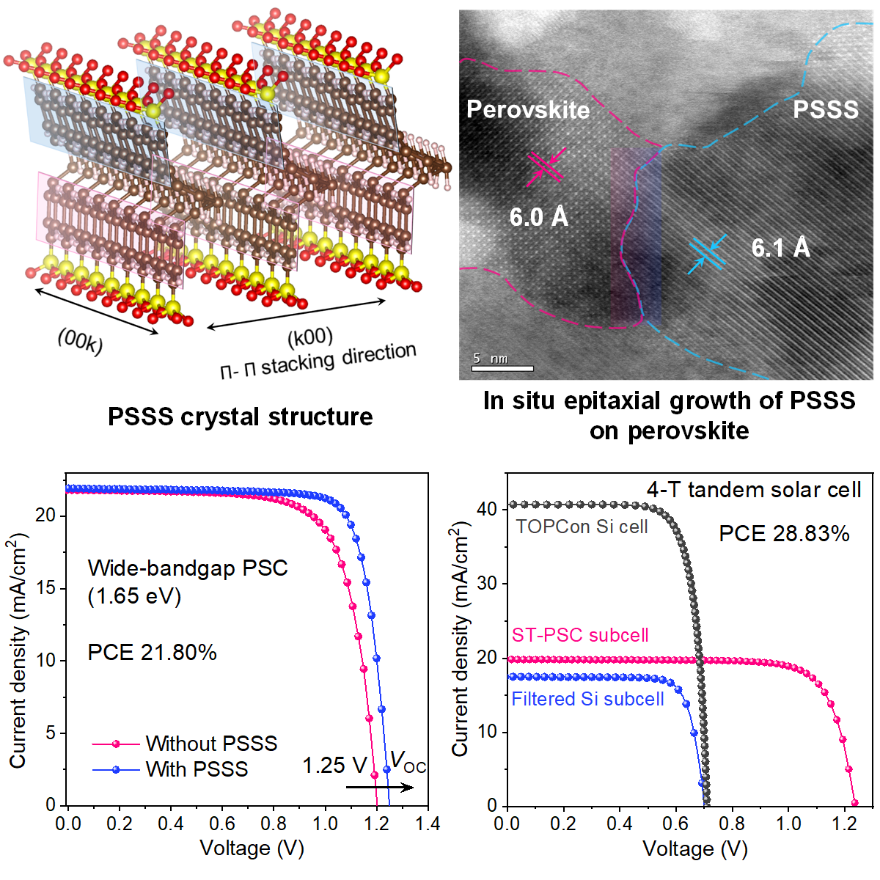Researchers from the Institute of Microelectronics of the Chinese Academy of Sciences and the North China Electric Power University developed an in situ epitaxial blocking structure on the wide-bandgap mixed-halide perovskite, which significantly suppressed the phase segregation of perovskite and improved the efficiencies of both single-junction and four-terminal solar cells.
This work was published in Joule on May 12, 2023.
Wide-bandgap mixed-halide perovskites show promise of realizing efficient tandem solar cells but at present suffer from photoinduced phase segregation, which deteriorates their device efficiency and stability.
The researchers implemented a highly crystalline blocking structure to control phase segregation by in situ epitaxial growth onto a mixed-halide wide-bandgap perovskite.
Due to the released lattice strain, improved potential barrier of halide ion migration, and reduced defects by the blocking structure, the mixed-halide perovskite solar cell with a bandgap of 1.65 eV demonstrated a remarkable open-circuit voltage of 1.25 V (maximum 1.26 V) with a champion efficiency of 21.80% (certified 21.52%). Under continuous 1-sun white LED illumination, the device stored in nitrogen glovebox retained 90% of initial efficiency after 1080 hours.
The semitransparent device using the transparent indium tin oxide (ITO) back electrode yielded a state-of-the-art certificated efficiency of 19.15%, and a four-terminal tandem device was constructed by overlaying it on a silicon solar cell, obtaining a high efficiency of 28.83%.
The work is of great significance for the development of perovskite-based tandem photovoltaics.
Article link:
In situ epitaxial growth of blocking structure in mixed-halide wide-band-gap perovskites for efficient photovoltaics
Z. Li, X. Li,* X. Chen, X. Cui, C. Guo, X. Feng, D. Ren, Y. Mo, M. Yang, H. Huang, R. Jia, X. Liu, L. Han, S. Dai,* M. Cai*
Joule (2023) DOI: https://doi.org/10.1016/j.joule.2023.04.009

Fig. 1 The in situ epitaxial growth of the PSSS blocking layer on wide-bandgap perovskite device and four-tandem solar cell. (Figure is reprinted from Joule DOI: https://doi.org/10.1016/j.joule.2023.04.009)
Contact:
Li Xing
Institute of Microelectronics of The Chinese Academy of Sciences
Tel: +86-10-82995805
E-mail: lixing2021@ime.ac.cn











